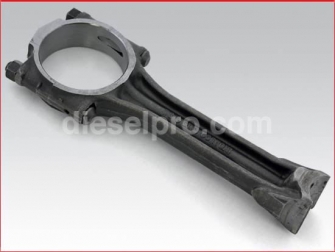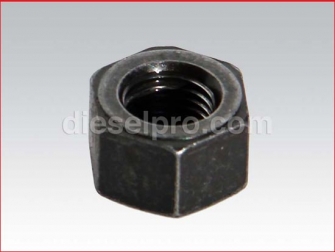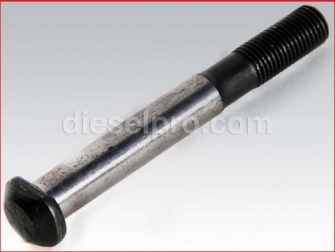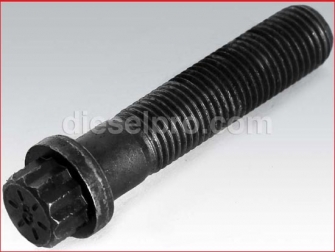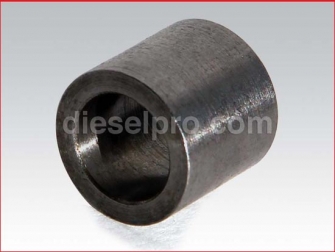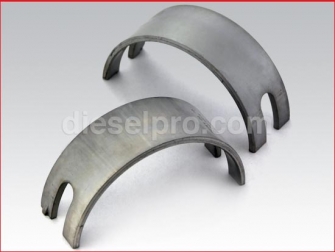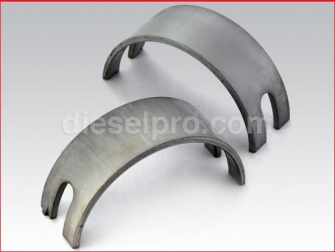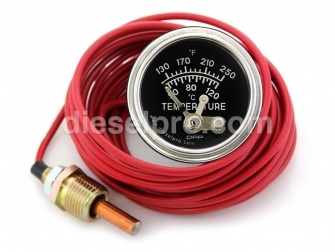Parts For Detroit Diesel 6V92 Turbo for Australia - Connecting Rod Section
 Loading...
Loading... Parts for Detroit Diesel 6V92 Turbo – Connecting Rod Section
The Detroit Diesel 6V92 Turbo is one of the most proven and versatile engines of the 92 Series family. Known for its two-stroke design, robust construction, and exceptional torque output, it has powered everything from marine vessels and buses to heavy-duty industrial equipment. Its turbocharged configuration improves power density, fuel efficiency, and overall responsiveness under heavy load — but that performance depends heavily on one critical component: the connecting rod assembly.
The connecting rod is the vital link that translates the linear motion of the piston into rotational motion for the crankshaft. In a turbocharged 6V92, where combustion pressures are elevated, the connecting rod assembly endures extreme tensile and compressive forces every second of operation. Maintaining these components in top condition is key to preventing catastrophic failures and ensuring long-term engine health.
Connecting Rod Assembly for Detroit Diesel 6V92 Turbo
The rebuilt connecting rod for Detroit Diesel 6V92 Turbo engines is precision-machined and inspected to OEM standards. Each rod is remanufactured using advanced reconditioning processes — including magnaflux inspection for cracks, resizing of the big end bore, and replacement of bushings where necessary.
-
Application: Designed for 6V92 Turbo engines but also compatible with 8V92, 12V92, and 16V92 engines.
-
Condition: Professionally rebuilt and sold with a refundable core deposit.
-
Function: Transfers combustion force from the piston pin to the crankshaft while maintaining proper bearing alignment and oil clearance.
A properly rebuilt connecting rod ensures correct piston movement, reduces vibration, and extends crankshaft and bearing life — essential for turbocharged applications where higher cylinder pressures are common.
Connecting Rod Hardware and Fasteners
The connecting rod nut for the 6V92 Turbo plays a critical role in securing the rod cap to the connecting rod body. Proper torque on these nuts is vital to prevent rod cap separation during operation.
-
Material: High-tensile alloy steel with heat treatment for strength and fatigue resistance.
-
Replacement Recommendation: Always replace rod nuts during overhaul or rebuilds; reused fasteners can lose clamping force after multiple torque cycles.
The connecting rod bolts are the backbone of the rod-to-cap connection. These bolts hold the rod cap securely under extreme dynamic stresses, maintaining bearing alignment through millions of firing cycles.
-
Available Types: Standard connecting rod bolt and a variant for two-piece piston configurations.
-
Purpose: Ensures structural stability during high-RPM operation, preventing bearing spin or cap distortion.
Spacer for Two-Piece Piston Rods
Some versions of the 6V92 Turbo engine use a two-piece piston design. In these engines, a connecting rod spacer helps maintain correct rod alignment and bearing surface contact.
-
Material: Precision-machined steel or hardened alloy.
-
Function: Prevents lateral movement and helps maintain crankshaft balance.
Connecting Rod Bearings (Shell Sets)
The bearing shells (also called conchas de biela or metales) are installed between the connecting rod and crankshaft journal to reduce friction and absorb load.
-
Application: Ideal for engines with crankshafts still within OEM diameter specifications.
-
Function: Provides a smooth, durable surface for crank rotation and proper oil film distribution.
-
Maintenance Note: Always inspect crank journals for scoring or pitting before installing standard-size bearings.
Oversized Bearing Sets – 0.010" and 0.020"
When crankshaft journals are reground due to wear, oversize bearings are required.
-
0.010” Oversize Bearings: Used after a light regrind or polish.
-
0.020” Oversize Bearings: Required for heavier regrind or journal restoration work.
-
Compatibility: Suitable for Detroit Diesel 71 and 92 Series engines, including the 6V92 Turbo.
Proper selection of bearing size ensures correct oil clearance and lubrication, preventing excessive wear, overheating, or rod knock.
Signs Your 6V92 Turbo Connecting Rod Assembly Needs Replacement
Regular inspection of connecting rods and related hardware is crucial during overhauls or when abnormal engine symptoms occur. Look for these indicators of connecting rod wear or damage:
-
Knocking noise under load – often indicates excessive rod bearing clearance.
-
Metal flakes in oil – can signal bearing shell or bolt failure.
-
Low oil pressure – may result from worn bearings or rod cap distortion.
-
Piston slapping or uneven compression – can point to bent connecting rods.
-
Crankshaft scoring – indicates improper bearing alignment or lubrication failure.
Prompt replacement prevents costly crankshaft or block damage and ensures continued reliability under heavy turbocharged operation.
Installation and Maintenance Tips
-
Always use new rod bolts and nuts — torque stretch can compromise reused fasteners.
-
Check rod alignment and bearing crush fit using precision tools during assembly.
-
Pre-lubricate bearing shells before installation to prevent dry starts.
-
Verify torque specifications according to Detroit Diesel service manuals.
-
Inspect oil passages through the rod for blockages to ensure adequate lubrication.
By following these procedures, technicians can extend the life of both the connecting rod assembly and the entire rotating group.
Compatibility with Other Detroit Diesel 92 Series Engines
While this section focuses on the 6V92 Turbo, the connecting rod components listed here share compatibility across other configurations in the 92 Series family — including the 8V92, 12V92, and 16V92 engines. However, always verify part compatibility with your engine’s specific model and configuration, especially when working on naturally aspirated versus turbocharged units.
Additional Maintenance Parts for the 6V92 Turbo
In addition to connecting rods and bearings, mechanics servicing the 6V92 Turbo often replace associated hardware and monitoring instruments:
-
Mechanical Gauges: For monitoring oil pressure and temperature.
-
Electrical Gauges (12V and 24V): Provide precise readings compatible with vessel or vehicle electrical systems.
-
Mechanical Gauges with Alarm: Include audible warning systems to prevent engine damage due to loss of oil pressure or overheating.
These monitoring tools help verify engine health and detect lubrication or bearing problems before major failures occur.
Why Proper Connecting Rod Maintenance Matters
Turbocharged Detroit Diesel 6V92 engines operate under far greater thermal and mechanical stress than naturally aspirated versions. A weakened or out-of-spec connecting rod can cause:
-
Bearing seizure
-
Rod cap failure
-
Piston and liner scoring
-
Crankshaft fracture
Routine rod inspections, proper torqueing of fasteners, and timely replacement of shells and spacers ensure that your 6V92 Turbo continues delivering dependable power for years to come.
Why Purchase Your 6V92 Turbo Connecting Rod Parts from Diesel Pro
-
Proven Quality: Every rebuilt rod and component is inspected, balanced, and machined to Detroit Diesel OEM standards.
-
Fast Worldwide Shipping: Diesel Pro Power ships globally with tracking and reliable delivery.
-
Expert Support: Our specialists help ensure the correct components are selected for your specific engine configuration.
-
Trusted by 40,000+ Customers: Diesel Pro Power has earned a reputation for reliability and precision in Detroit Diesel parts for over 40 years.
-
Ready-to-Install Components: All parts come cleaned, prepared, and ready for immediate installation, minimizing downtime.
When it comes to maintaining your Detroit Diesel 6V92 Turbo engine, using premium-quality connecting rod components from Diesel Pro ensures maximum performance, reduced maintenance costs, and long-term engine durability.



 Free US Calls: 1-888-433-4735
Free US Calls: 1-888-433-4735 International: 305-545-5588
International: 305-545-5588






